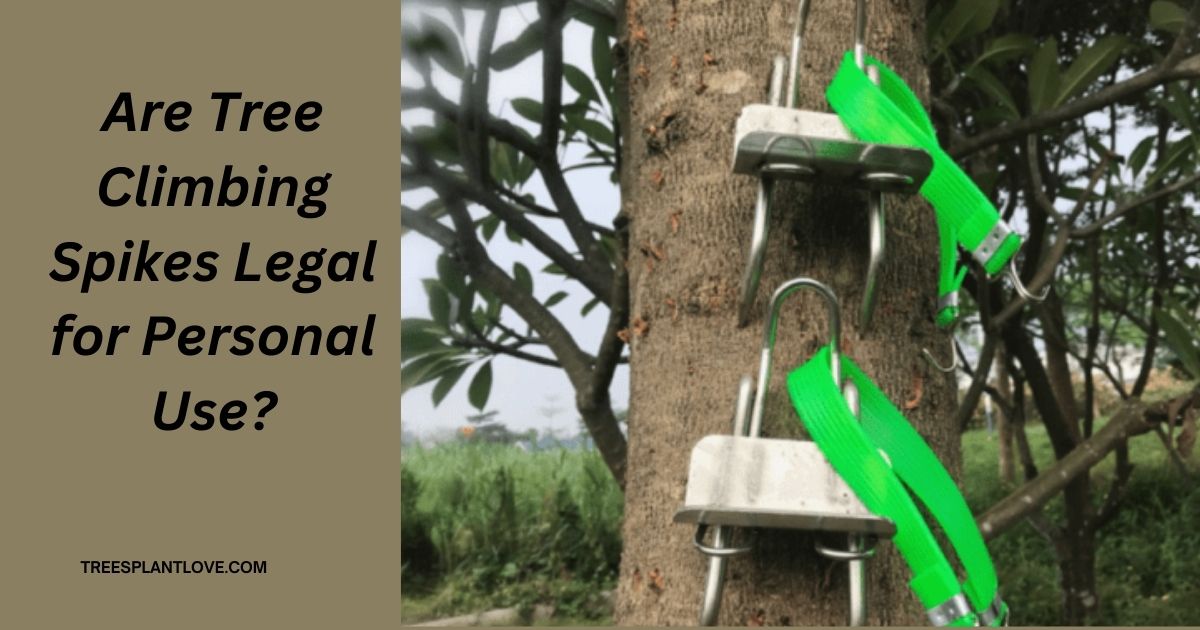
Are Tree Climbing Spikes Legal for Personal Use? Understanding the Laws and Risks
Are Tree Climbing Spikes Legal for Personal Use?: Tree climbing spikes, also known as climbing irons or spikes, are a popular tool among arborists, foresters, and tree care professionals. These specialized tools, which attach to the climber’s boots and allow them to scale trees with ease, are designed for efficiency and safety in tree work. However, when it comes to personal use—such as for recreational climbing, or even just for the occasional tree trimming—many people wonder: are tree climbing spikes legal for personal use?
The answer is nuanced and depends on several factors, including local laws, regulations, and the purpose of use. In this article, we’ll explore the legalities surrounding tree climbing spikes, their appropriate usage, and the potential risks of using them in a non-professional setting.
Understanding Tree Climbing Spikes
Tree climbing spikes are sharp, metal devices that attach to the legs of a climber, allowing them to dig into the tree trunk for support as they ascend. Arborists commonly use these spikes when working on large, tall trees that require maintenance or removal. Tree climbing spikes are also used in emergency rescue situations where tree access is needed quickly.
However, when these spikes are used improperly or inappropriately, they can cause harm to the tree and pose risks to the user. For this reason, it’s important to understand their legality and proper use.
Legality and Regulations
In many places, the legality of using tree climbing spikes for personal use varies. Broadly speaking, the rules surrounding their use depend on factors such as location, type of tree, and intended purpose. Here are the primary considerations:
State and Local Laws
Laws regarding tree climbing spikes differ from one jurisdiction to another. In some areas, there may be no specific regulations addressing tree climbing equipment, while in others, strict laws may govern the use of such tools. For example, in certain states in the U.S., using tree climbing spikes on privately owned trees without permission can be prohibited because the spikes cause permanent damage to the tree’s bark, which can impact the tree’s health.
Environmental Protection Regulations
In many regions, tree care regulations are in place to protect natural resources, especially on public lands or protected forests. Using tree climbing spikes on protected or endangered species, for instance, could be illegal. Such tools may also be prohibited in sensitive environments where flora and fauna are protected, to ensure the preservation of the ecosystem.
Personal Use vs. Commercial Use
The legal use of tree climbing spikes also depends on whether the activity is personal or commercial. Professional arborists, tree removal companies, and utility workers who use climbing spikes for tree work generally need to comply with occupational safety regulations. For personal use, such as recreational tree climbing or DIY tree trimming, the legalities may differ. If you intend to use tree climbing spikes for personal tree climbing or just for fun, it’s essential to check local laws and regulations. In many areas, these spikes are not recommended for casual use due to the risk of injury and the potential damage they can cause to trees.
Land Ownership
If you’re considering using tree climbing spikes on your own property, you generally have more leeway. However, if you’re climbing trees that belong to someone else or are on public property, it is essential to obtain permission. Unauthorized climbing with spikes can result in fines or legal action, especially if the activity causes harm to the tree.
Risks of Personal Use
While tree climbing spikes may seem like a convenient tool, they come with a range of risks, especially for those without professional training.
- Injury to the User: Climbing trees with spikes, particularly without proper techniques, increases the chances of falling, slipping, or sustaining injuries. Spikes can also damage the climber’s legs if not used correctly.
- Tree Damage: One of the main reasons for legal restrictions on personal use is the damage tree climbing spikes can inflict on the tree. The spikes penetrate the tree’s bark, causing holes that can lead to infections, diseases, and an overall weakening of the tree structure. Trees that are harmed by spikes may eventually die or face long-term health problems.
- Environmental Impact: On protected lands, the use of climbing spikes can also impact wildlife habitats. The damage to the tree could affect birds, insects, and other creatures that rely on the tree for shelter or food.
Alternatives to Tree Climbing Spikes
For those interested in climbing trees for personal use, there are safer, more environmentally friendly alternatives to tree climbing spikes:
- Rope and Harness Systems: These systems are used by professionals for safe tree climbing without causing harm to the tree. Using ropes, harnesses, and ascenders allows climbers to ascend without damaging the tree’s trunk.
- Ladders: For smaller trees or branches that don’t require extensive climbing, a sturdy ladder may suffice. This eliminates the need for spikes and the associated risks.
- Tree Climbing Gear for Recreation: Some companies offer climbing gear designed for recreational climbers. These products are specifically designed to be safe and non-damaging to the trees.
Conclusion
In summary, the use of tree climbing spikes for personal use is a legallygray area that varies by location, tree type, and intended purpose. In many cases, it’s important to seek permission from landowners, adhere to local regulations, and consider the environmental impact of using spikes. For those interested in recreational climbing or tree maintenance, alternatives like rope and harness systems are safer and more responsible options.
Before using tree climbing spikes, it’s critical to familiarize yourself with the laws and regulations in your area and to consider the long-term health of the trees involved. With proper understanding and equipment, you can enjoy tree climbing in a way that’s both safe and legal.

Leave a Reply